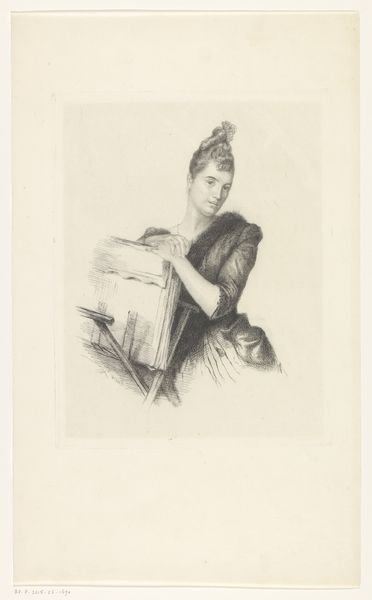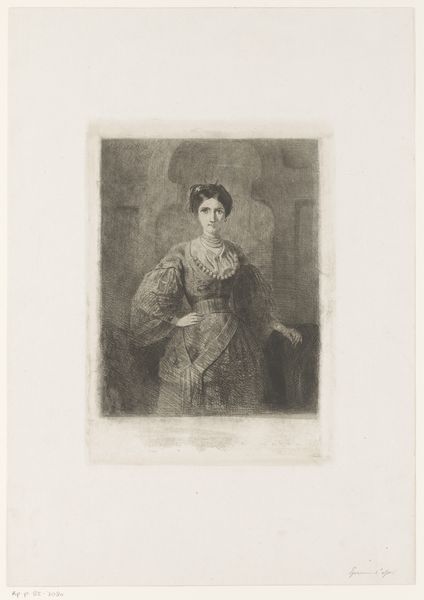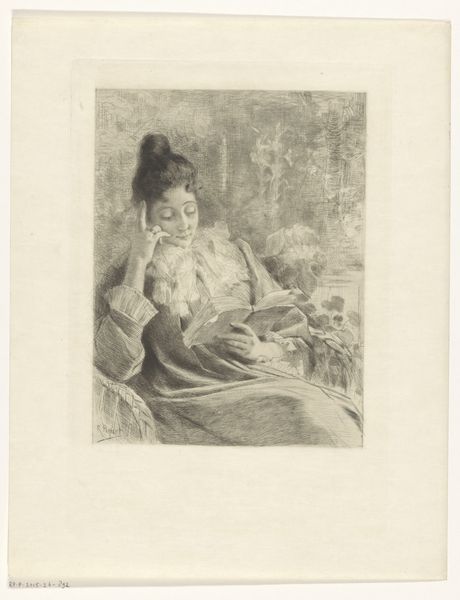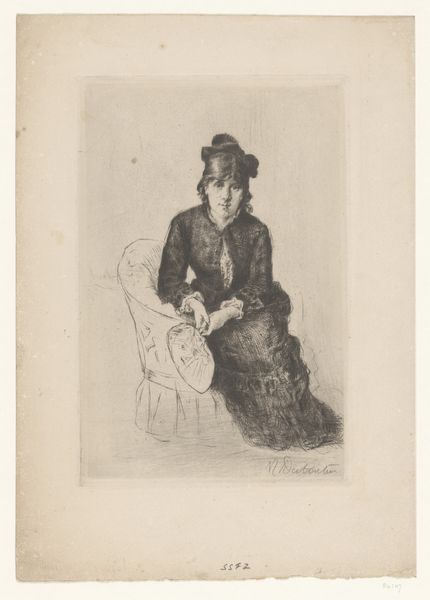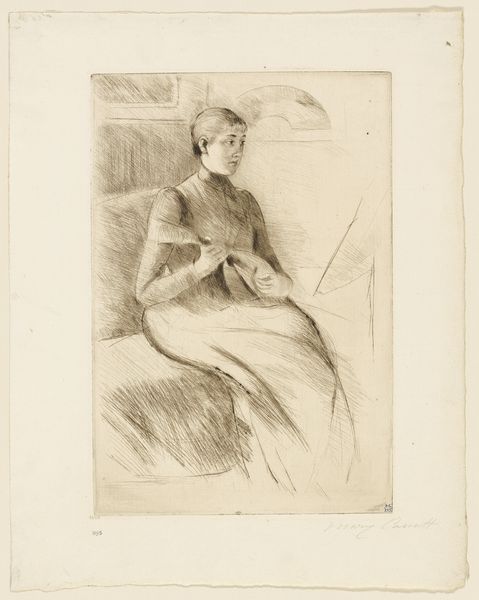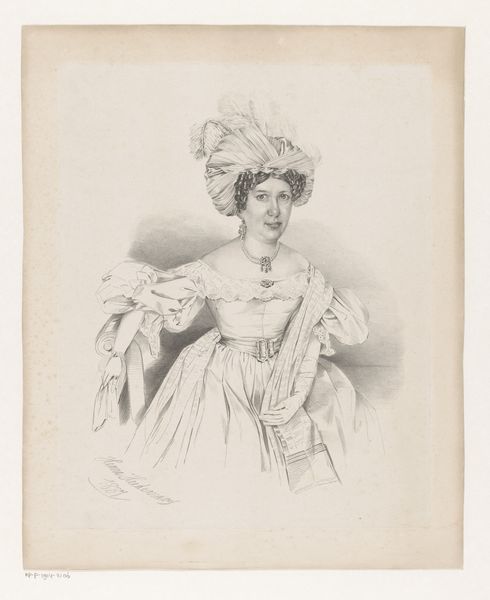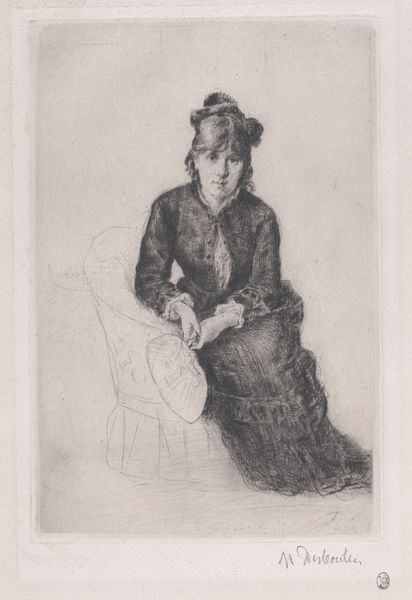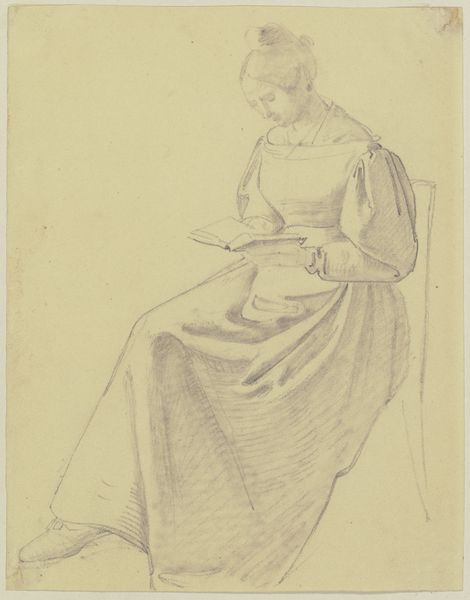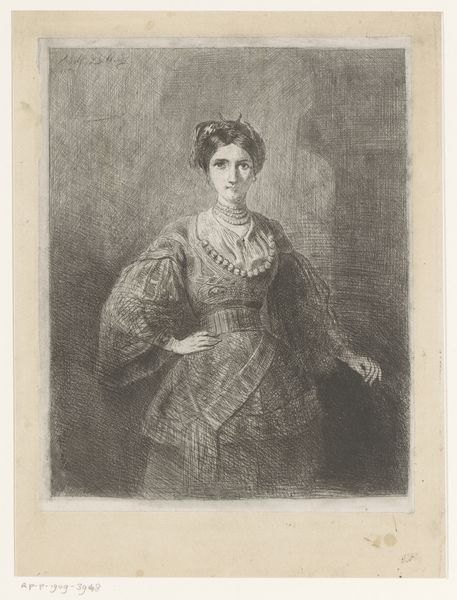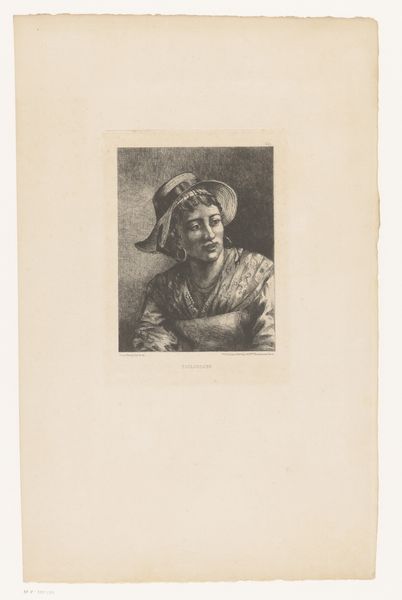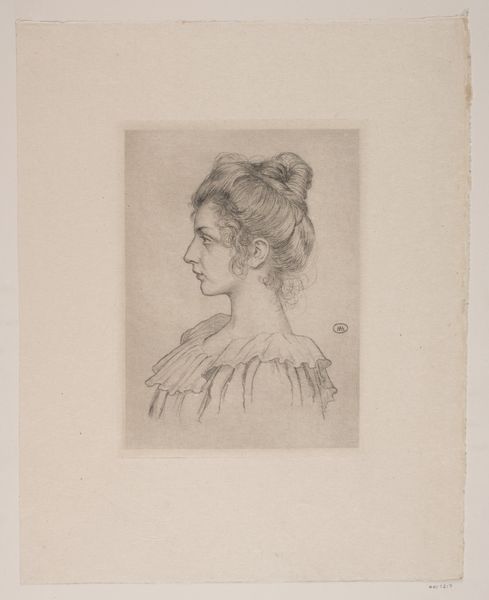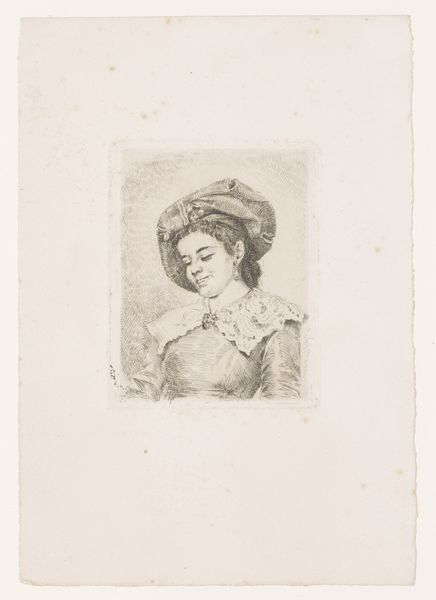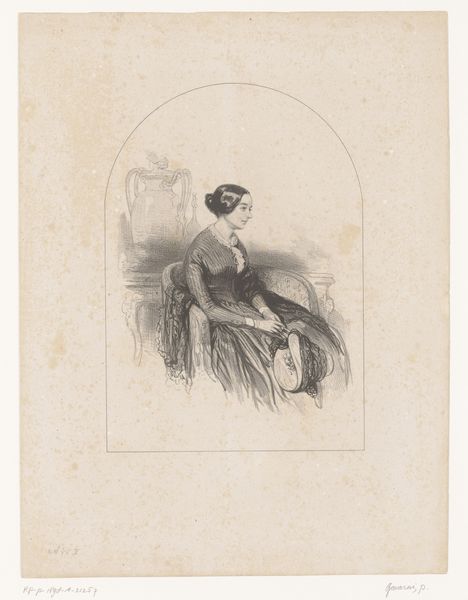
drawing, print, pencil, graphite
#
portrait
#
drawing
# print
#
impressionism
#
figuration
#
pencil drawing
#
pencil
#
graphite
Dimensions: Sheet: 15 3/8 × 10 7/16 in. (39 × 26.5 cm) Plate: 9 5/8 × 7 3/4 in. (24.5 × 19.7 cm)
Copyright: Public Domain
Curator: This is Marie Bracquemond's "Portrait of Mlle Quivoron," which the museum dates broadly to between 1860 and 1914. Editor: It feels like a whispered secret. The tonality, that delicate pencil work—it's almost evanescent. Curator: Indeed. Bracquemond uses graphite with a confident restraint. Look at the composition, how she masterfully juxtaposes the textures of the sitter's dress with the plush chair. The figure occupies a defined space, yet the subtlety of the rendering avoids any harsh demarcation. It is about implication more than assertion. Editor: The impressionistic quality definitely tempers its formal presentation, which suggests it's an exploration in both printmaking and in the social conventions for presenting women at that time. Was printmaking how artists of her time made their living, offering portrait services more widely than traditional painting allowed? It is definitely less monumental than other portraits of that era. Curator: It's worth acknowledging that while Bracquemond, like other female artists, may have found prints to be a more accessible avenue, it is reductive to view it solely through the lens of constraint. There's intentionality in her rendering, especially when considering Impressionist precepts of capturing fleeting moments. This approach softens traditional notions of portraiture, emphasizing dynamism over rigid formalism. It's evident from her precise hatchmarks that control of light and tone were very much at the center of her approach to the graphite material. Editor: True, but look closer—the slight blurring around the edges, the somewhat unfinished quality—suggest to me the ephemeral and fluid nature of labor itself. Maybe not a quick sketch to capture "fleeting moments," but to be efficiently repeatable and saleable. The looseness implies not just an aesthetic choice but an economy of labor and consumption inherent in printmaking. Curator: Perhaps we find ourselves at an interesting intersection, a productive tension between intentional aesthetics and material conditions. Bracquemond's portrait resonates not just as a formal arrangement, but as a layered work imbued with socio-historical meanings. Editor: Agreed, by engaging in both printmaking and figuration, she is actively challenging these conventions and expectations placed upon women both within art and more broadly within society. Curator: An insightful consideration that adds to our understanding. Thank you for your insights. Editor: My pleasure. It's these points of connection that breathe life into the artwork, after all.
Comments
No comments
Be the first to comment and join the conversation on the ultimate creative platform.
